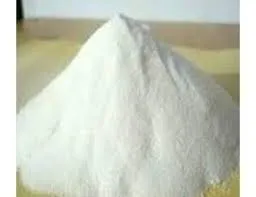
Dec . 11, 2024 11:06 Back to list
Ways to Effectively Dissolve Hydroxyethyl Cellulose in Various Solutions
How to Dissolve Hydroxyethyl Cellulose
Hydroxyethyl cellulose (HEC) is a non-ionic, water-soluble polymer derived from cellulose, extensively used in various industries, including cosmetics, pharmaceuticals, food, and construction. Its unique properties, such as thickening, gelling, and film-forming capabilities, make HEC a popular choice in formulating products like lotions, creams, and adhesives. However, dissolving HEC properly is essential to maximize its functionality and effectiveness in applications. This article will guide you through the process of dissolving hydroxyethyl cellulose effectively.
Understanding Hydroxyethyl Cellulose
Before diving into the dissolution process, it’s essential to understand the characteristics of HEC. This polymer is available in different viscosity grades, and its solubility in water is influenced by several factors, including temperature, pH, and the concentration of HEC. HEC is typically available in powder form, which means proper handling and mixing techniques are crucial for achieving a smooth, lump-free solution.
Materials Needed
To dissolve hydroxyethyl cellulose, you will require the following materials 1. Hydroxyethyl cellulose powder 2. Distilled water (or the solvent specified for your application) 3. A mixing container (preferably non-reactive) 4. A handheld mixer, stirrer, or a mechanical mixer (for larger quantities) 5. A digital scale (to measure accurate quantities)
Step-by-Step Guide to Dissolving HEC
1. Measurement Start by measuring the desired amount of hydroxyethyl cellulose. The concentration of HEC in the final solution depends on its intended application, so refer to formulation guidelines or manufacturer recommendations for specific concentrations.
2. Water Temperature Warm water is generally preferred for dissolving HEC as it promotes better solubility. However, the temperature should not exceed 70°C (158°F) to avoid any degradation of the polymer. Typically, a temperature of around 50°C (122°F) strikes a good balance.
how to dissolve hydroxyethyl cellulose

3. Add HEC Gradually Slowly sprinkle the measured HEC powder into the warm water while continuously stirring. This gradual addition helps prevent clumping and ensures even dispersion. Avoid dumping the entire amount in at once, as it can lead to the formation of lumps that are difficult to break down.
4. Mixing Use a handheld mixer or stirrer to blend the solution. Stirring should be vigorous, but not so aggressive that it introduces excessive air into the mix. If using a mechanical mixer, set it to a moderate speed. Continue mixing for at least 10 to 15 minutes to ensure a uniform solution without lumps.
5. Let it Hydrate After mixing, allow the solution to sit for a while (typically 30 minutes to an hour). This resting period gives the HEC time to fully hydrate and swell, which enhances its viscosity.
6. Check Consistency After the resting period, check the consistency of the solution. If it appears too thick, you can add more water to achieve your desired viscosity. For applications requiring specific characteristics, further adjustments can be made at this stage.
Tips for Successful Dissolution
- Use Distilled Water Using distilled or deionized water ensures that impurities do not affect the solubility and performance of HEC. - Control pH If applicable, monitor and adjust the pH of the solution to optimize the properties of the final product, as HEC can be sensitive to pH changes. - Storage Store the concentrated HEC solution in a cool, dark place if not used immediately. This helps maintain its properties and prevents microbial growth.
Conclusion
Dissolving hydroxyethyl cellulose may require some patience and precise techniques, but understanding the process is key to unlocking its full potential in your formulations. Whether you're creating a cosmetic product, a pharmaceutical preparation, or any other application, proper dissolution will help you achieve the desired results. By following the steps outlined in this article, you can effectively dissolve HEC and harness its beneficial properties in your formulations.
-
Unlocking the Benefits of HPMC Products: A Gateway to Versatile Applications
NewsAug.07,2025
-
Tile Bonding Cellulose: The Key to Superior Adhesion and Durability
NewsAug.07,2025
-
Hydroxypropyl Methylcellulose Powder: The Versatile Component in Modern Pharmaceuticals
NewsAug.07,2025
-
Hydroxyethyl Cellulose: The Versatile Solution for Various Industries
NewsAug.07,2025
-
Hydroxyethyl Cellulose (HEC): The Versatile Polymer for Various Applications
NewsAug.07,2025
-
The Ultimate Guide to Mortar Bonding Agent
NewsAug.06,2025







